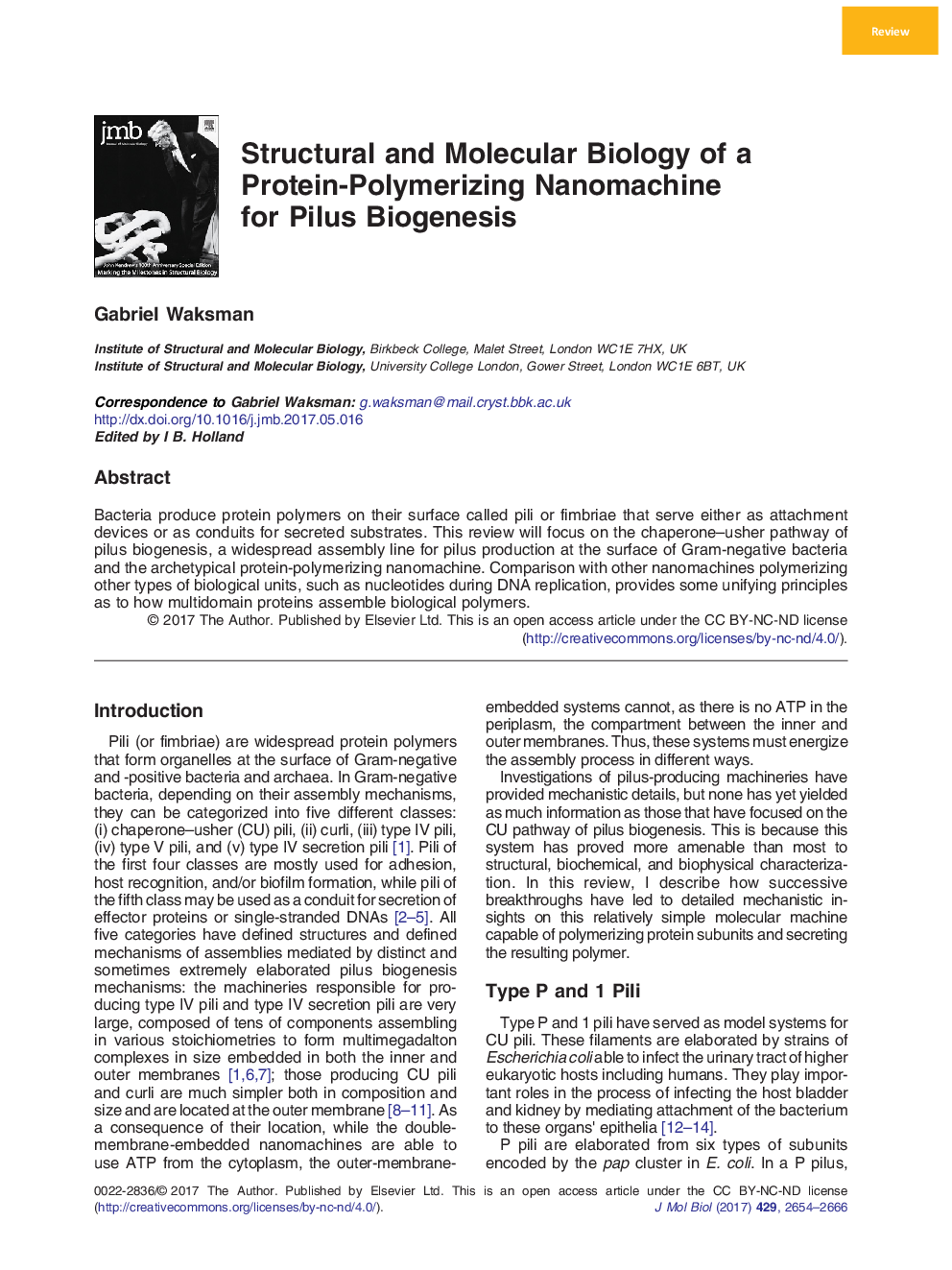| Article ID | Journal | Published Year | Pages | File Type |
|---|---|---|---|---|
| 5533266 | Journal of Molecular Biology | 2017 | 13 Pages |
â¢This article reviews progress on pilus biogenesis by the chaperone-usher pathwayâ¢Details of the subunit incorporation cycle by the usher are discussed and knowledge gaps identifiedâ¢General principles of polymer assembly by nanomachines are established by comparing the mechanism of the usher with that of DNA polymerases
Bacteria produce protein polymers on their surface called pili or fimbriae that serve either as attachment devices or as conduits for secreted substrates. This review will focus on the chaperone-usher pathway of pilus biogenesis, a widespread assembly line for pilus production at the surface of Gram-negative bacteria and the archetypical protein-polymerizing nanomachine. Comparison with other nanomachines polymerizing other types of biological units, such as nucleotides during DNA replication, provides some unifying principles as to how multidomain proteins assemble biological polymers.
Graphical AbstractDownload high-res image (57KB)Download full-size image
